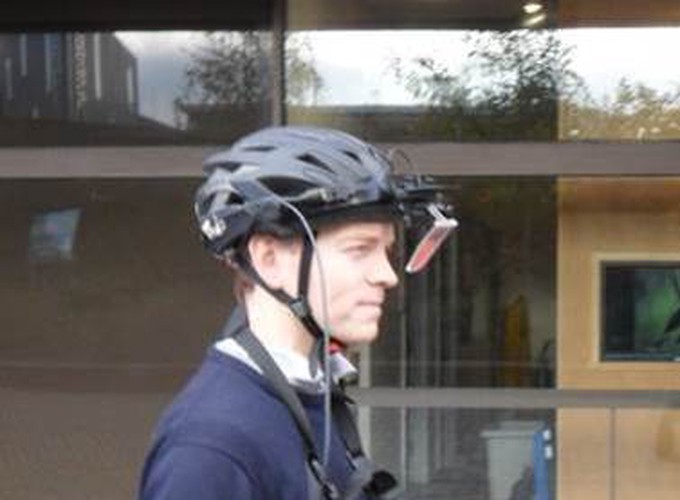Understanding how pedestrians and cyclists visually experience the built environment can guide how we design our urban infrastructure to make it a safer and more attractive environment for people to walk and cycle in. One example of this is in the context of designing appropriate outdoor lighting. If we know what the important visual tasks of pedestrians and cyclists are, we can design lighting to facilitate these visual tasks when it is dark.
As part of my PhD I carried out a study in which people walked real urban environments outdoors whilst wearing an eye-tracker. An eye-tracker is a piece of equipment that records your eye movements and gaze behaviour, and is able to give detailed information about what you look at in the world around you. I wanted to identify what features of the environment were important for pedestrians to look at. Simply looking at something does not mean it is important to us though. For example, we often do not even direct our attention at the thing our eyes are pointing at. A good example of this is shown by Simons and Chabris’ ‘Invisible Gorilla’ experiment. In this study, participants were shown a video clip of two teams passing a basketball between them, and asked to count the number of passes made between one of the teams.
Almost half of participants failed to notice the unexpected appearance of the gorilla during the video clip, demonstrating a failure to notice very obvious information in front of their eyes. We do not always pay attention to or notice whatever it is our eyes are pointing at. To address this and identify features that we are paying attention to during my eye-tracking study, I also used a secondary cognitive attention task. This was used to identify when we may have been paying particular attention to what we were looking at.
Using this secondary task to hihlight important visual behaviour, my study confirmed that observing the path for potential trip hazards, and looking at other people, were the two most important visual tasks for pedestrians.
Similar work is currently being carried out within the Lighting Research Group to identify the important visual behaviour of cyclists. This work is being done by Hussain Qasem, a PhD student under the supervision of Prof Steve Fotios and myself.
